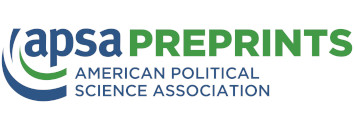Abstract
US presidents increasingly frequently threaten and use economic coercion to target competitors and allies— reaching for tariffs, sanctions or aid suspension. While economic coercion is costly for the target state, it also creates tangible costs for the US economy and households. Yet, we know little about the opinion of the US public on economic coercion, how much are Americans willing to pay for this type of policy and to what extent the target’s relation to the US affects these preferences. This registered report offers a novel constrained choice experiment to uncover preferences of US public for economic coercion in respect to China and Canada, while also tracing the potential role of an explicit discussion of domestic costs, experimentally positioning them either at the individual or aggregate-level. This work advances our knowledge of domestic roots of foreign policy and offers a contribution that links economic coercion to public preferences.


![Author ORCID: We display the ORCID iD icon alongside authors names on our website to acknowledge that the ORCiD has been authenticated when entered by the user. To view the users ORCiD record click the icon. [opens in a new tab]](https://preprints.apsanet.org/engage/assets/public/apsa/logo/orcid.png)

